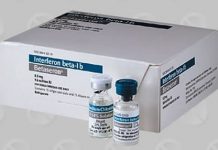Diabetes is a chronic condition that requires close monitoring in order to maintain safe sugar levels in the blood.
Diabetic children often rebel against the stringent regime of finger pricks, injections and food restrictions. Their parents may have to ensure that they obey the rules that lead to good sugar control.
Understand the Condition
The diagnosis of diabetes is generally a tremendous shock and can lead to feelings of guilt, helplessness and depression. Understanding the condition is an important step towards accepting it. Talk to health professionals, read medical literature and take books out of the library to learn more. A useful site is Diabetes.org
Work with the Child
Depending on the child’s age, explain to him what diabetes is and why he needs to control his blood sugar. Older children will be able to understand that a lack of care now, can lead to blindness, kidney failure and foot and leg problems in years to come.
Find a Child-friendly Doctor
Diabetic children need regular health checks so it is important to find a doctor they are comfortable with. Recommendations can be sought from local support groups or other parents with diabetic children.
Explore Medication Options
Diabetes is a complex condition and there are several brands of insulin on the market. Some are long acting, some are quick acting and others are a combination of the two. Unlike the old fashioned syringes and vials, most insulin now comes in pen form. These may be disposable or designed to accept refills. An insulin pump is another option but the cost can be prohibitive.
Experiment with Baking and Cooking
There is a wide range of food available for diabetics. Look for sugar free products that are also low in fat. Children often miss Mom’s home baking so try baking some diabetic cookies or cakes using sugar substitutes. Recipes are available at Diabetes Info Center.
Beware of Teenage Years
Teenage hormones can play havoc with a child’s sugar control. Insulin dosages may need frequent adjustments and hypoglycaemic attacks (hypos) may become more common. Make sure that the child’s friends are aware of his condition and are familiar with the warning signs for high or low blood sugar.
Handling Hypoglycaemic Attacks
These happen to every diabetic, no matter how carefully one controls his sugar levels. Illness and growth spurts are common causes as is incorrect administration of insulin. A hypo occurs when there is too much insulin in the blood and sugar levels start to plummet. If not corrected in time, a hypo can lead to convulsions, brain damage and death. Symptoms of a sugar low include:
- Sweating
- Clammy skin
- Confusion and disorientation
- Drunken behaviour
- Aggression
- Sleepiness
- Unresponsive to surroundings
- Convulsions
If a child displays any of these symptoms, test his blood to see if the sugar levels are too high or too low. If they are low and the child is still conscious, help him to drink something sugary such as fresh fruit juice or coke. Follow this with a protein snack such as a meat sandwich and test his sugar a few more times until it stabilizes.
Practise Injecting
If the sugar is low and the child is unconscious, he will need a glucose injection. This should be stored in the fridge and taken with him on holidays or sleepovers. Practise injecting an orange with a normal syringe to remove the fear of injecting an unconscious child in an emergency.
Diabetes is a lifelong condition but with proper care and medical support, diabetic children can lead a long, normal life and partake in most activities and pastimes. The important thing is to teach them how to care for themselves from the time of diagnosis.











